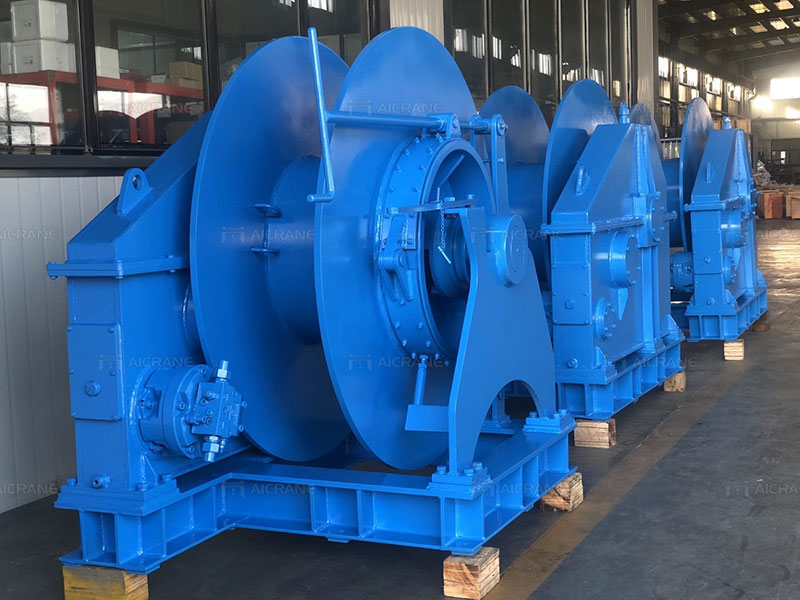Marine hydraulic towing winches are integral to the towing operations in the maritime industry. These powerful devices play a crucial role in ensuring safe and efficient towing of vessels, barges, and offshore structures. In this article, we delve into the working principle of marine hydraulic towing winches, shedding light on the components, mechanisms, and advantages that enable them to handle heavy loads and provide reliable performance in demanding marine environments.
Hydraulic Power System
The working principle of marine hydraulic towing winches centers around the hydraulic power system. This system consists of a hydraulic pump, hydraulic fluid, control valves, and actuators. The hydraulic pump pressurizes the hydraulic fluid, which is then transmitted through hydraulic lines to various components of the winch.

Drum and Line Storage
The primary component of a towing winch is the drum, which is a large cylindrical spool capable of storing and releasing the towing line. The line is wound around the drum, allowing for controlled payout and retrieval during towing operations. The drum is connected to the hydraulic power system through hydraulic motors, which drive its rotation. The size and design of the drum depend on the specific towing requirements, such as line length and tensile strength.
Hydraulic Motors
Hydraulic motors play a vital role in the working principle of marine towing winches. These motors receive pressurized hydraulic fluid from the power system and convert it into rotational mechanical power. The hydraulic motors are connected to the drum, driving its rotation and enabling the controlled payout or retrieval of the towing line. The speed and torque of the hydraulic motors can be controlled through the hydraulic power system, providing precise control over the towing operation.

Control Valves and Actuators
Control valves are an essential component of the hydraulic system in towing winches. They regulate the flow of hydraulic fluid to the hydraulic motors, allowing for precise control over the speed, direction, and torque applied to the drum. The valves are controlled by actuators, which receive signals from the operator or an automated control system. The actuators adjust the position of the valves to control the flow of hydraulic fluid, thus controlling the operation of the winch.
Safety Mechanisms and Load Monitoring
Marine hydraulic towing winches incorporate various safety mechanisms to ensure safe and efficient towing operations. Load monitoring devices are often installed to provide real-time feedback on the tension and load applied to the towing line. This information enables operators to monitor and adjust the towing process to prevent overloading or excessive strain on the winch and the towing line. Additionally, hydraulic powered winches may incorporate fail-safe mechanisms, such as emergency brakes or overload protection, to safeguard against equipment failure and mitigate potential accidents.
Advantages of Hydraulic Towing Winches
Hydraulic towing winches offer several advantages in marine towing operations. Their high power-to-weight ratio allows them to handle heavy loads effectively. The hydraulic system provides precise control over line tension, speed, and direction, ensuring smooth and efficient towing. Hydraulic winches also offer robustness and durability, capable of withstanding harsh marine environments. Their safety features, such as load monitoring and fail-safe mechanisms, contribute to enhanced operational safety.
Conclusion
Marine hydraulic towing winches operate on the principle of utilizing hydraulic power to drive the drum and control the towing line. Through a hydraulic power system, including pumps, motors, control valves, and actuators, these marine winches provide powerful and controlled towing capabilities, ensuring safe and efficient operations in the maritime industry.
